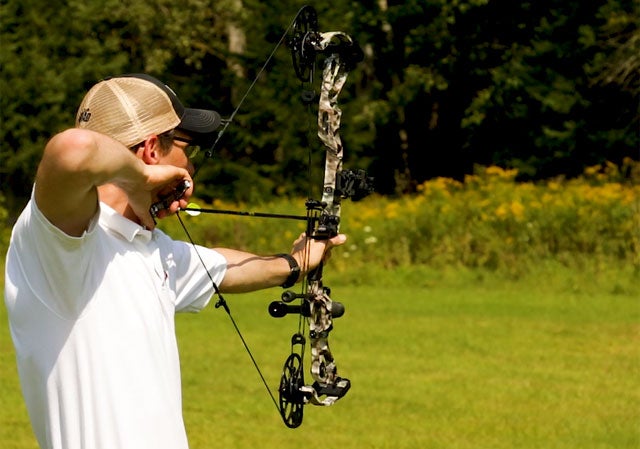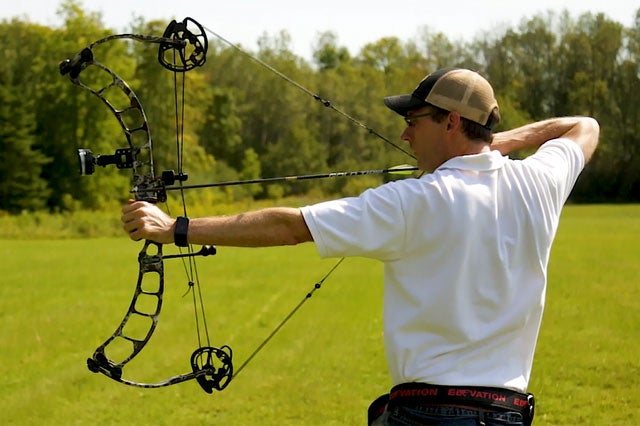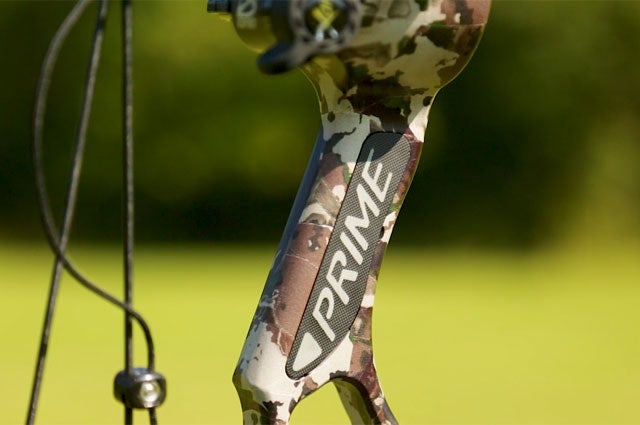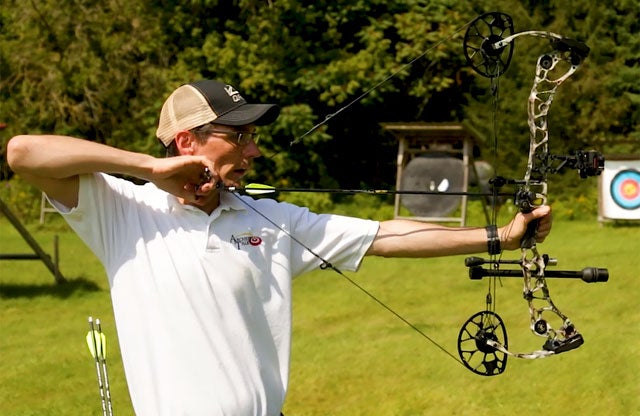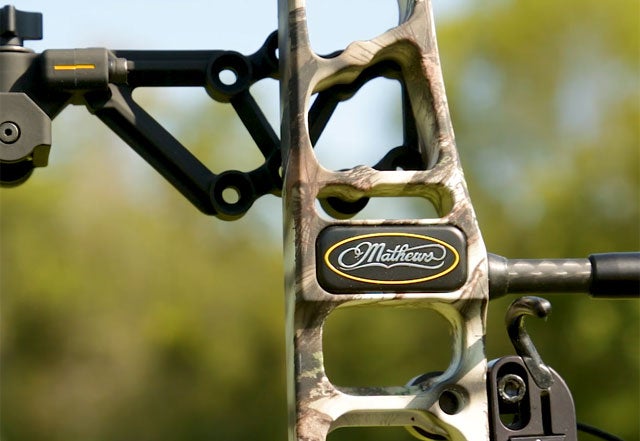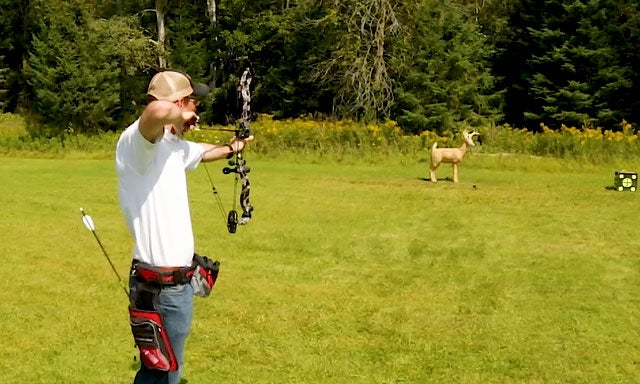Compound Bow Comparison: Mathews Halon 32 vs. Prime Centery Hybrid + Video
Lucas Cooney 11.02.17
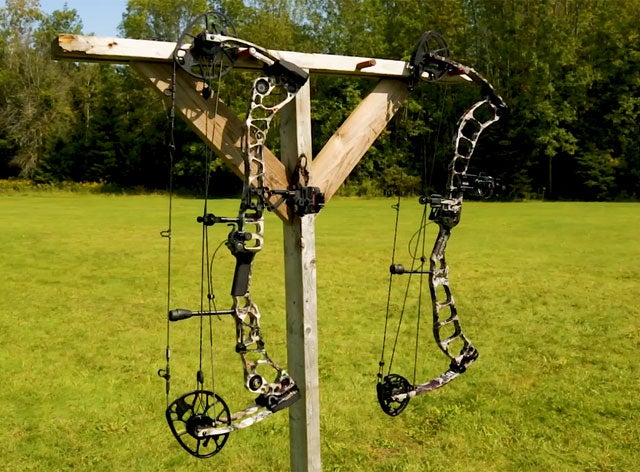
As part of our 2017 hunting bow project with sister site ArcheryTalk.com, which has included six individual bow reviews, we thought it would be interesting to do some head-to-head bow comparisons. This week we see how the Mathews Halon 32 compares to the Prime Centergy Hybrid.
Both bows are outfitted with QAD Ultra Rests and a Bee Stinger Counter Slide stabilizer. The Halon 32 has a Trophy Ridge React H5 sight, while the Centergy Hybrid uses a Spot-Hogg Hunter.

Specs
The Mathews Halon 32 has an axle-to-axle length of 32 inches, brace height of 6 inches, IBO rated speed of 343 feet per second, and mass weight of 4.73 pounds.
The Prime Centergy Hybrid has an axle-to-axle length of 32 1/4 inches, brace height of 6 inches, IBO rated speed of 338 fps, and mass weight of 4.5 pounds.
Speed
To test speed, I ran each bow through a chrono set up with a 29 ½-inch draw length, 60 pounds of draw weight and a 398-grain Gold Tip Valkyrie arrow.
The Halon had an average speed of 286 feet per second, while the Centergy Hybrid was just a hair below 285 feet per second. This is incredibly close. However, when I put the bows on a draw board, the Halon was coming up about a half-inch long, possibly because it’s a 70-pound bow that I turned down to 60 pounds. You can safely subtract 4 or 5 feet per second for that extra half-inch of draw length, giving the Centergy Hybrid a narrow win in the speed category.
Draw Cycle
I’m a big fan of the Halon 32 draw cycle. It is a smooth and easy draw that lends itself to long days of shooting. Once at full draw, it’s a very easy bow to hold and never feels like it wants to jump. The wall is solid for a cable-stop bow, though it has a bit of give to it.
The Centergy Hybrid is another very easy bow to draw, though it does have a noticeable dump into the valley. Like the Halon, the valley is quite generous, allowing you to relax while at full draw. I have this bow set up with limb stops, which offer a rock-solid back wall. But if you like a bit of give to the wall, cable stop options also come with the bow.
I’m not sure there’s a stand-out winner in draw cycle, but I might give the slightest edge to the Halon.
Grip
A bow’s grip is a huge factor for me, and the Centergy Hybrid might have my favorite of any hunting bow I’ve tested this year. It’s flat on the front with slightly rounded edges and is on the narrow side. It fits my hand perfectly.
The grip of the Halon 32 is not a favorite of mine. While it is fairly flat on the front, which I prefer, it just doesn’t feel right in my hand. I think it’s a hair too wide at the throat for my liking.
Accuracy
While the grip doesn’t feel great to me, you wouldn’t know it by how well the Halon 32 shoots. I’m really happy with how the bow groups at longer distances, and shots feel very repeatable.
When it comes to accuracy, the Centergy Hybrid is an absolute tack driver. This bow is on the long side and that brings some additional stability that has me very comfortable shooting at long range. If you want a bow that does everything, I think the Centergy Hybrid would be ideal for hunting and target shooting.
Accuracy is another tight race, but I’d give a slight edge to the Centergy.
Tunability
Of the six hunting bows I’ve been testing this year, the Centergy Hybrid was the easiest to tune for me. My QAD Exodus broadheads were flying with my field points in short order.
The Halon 32 really didn’t give me any tuning trouble either and it was shooting bullet holes in no time. I am finding a bit of right cam lean that I’d like to address, but I can’t do that without ordering Mathews’ Top Hat System.
I’ll give the Centergy the nod in tunability, but it’s a narrow victory.
Fit and Finish
As these are both flagship bows, fit and finish are very good all around. I am a big fan of the robust-looking long riser on the Halon and the Lost Camo XD looks great. The end loops on the string and cables aren’t served on this bow, but are showing no signs of wear.
The Centergy Hybrid, which is dressed in First Lite Camo, is also a sharp-looking bow and I can see no obvious flaws on the riser. One of the side plates on the grip is coming a bit loose, but that could easily be fixed with a bit of glue. The string and cables seem to be holding up well.
There are no losers in fit and finish, but if I have to pick a winner I’d have to go with the Halon 32.
Price and Value
Both the Mathews Halon 32 and Prime Centergy Hybrid have an MSRP of $1,099, so this category is pretty much a draw in my eyes. That is until you consider the fact that Prime will send you a free replacement string and cable set every two years. That adds a lot of value if you hold onto your bow for a long time.
Final Verdict
I’m having a great deal of trouble naming a winner in this comparison. I really like both of these bows and would happily make either of them my go-to hunting rig for years to come.
Pretty much every category I listed was a razor-thin win one way or the other. But if I’m spending my money, the grip on the Centergy is the difference maker for me. But that really is very much a personal decision.
